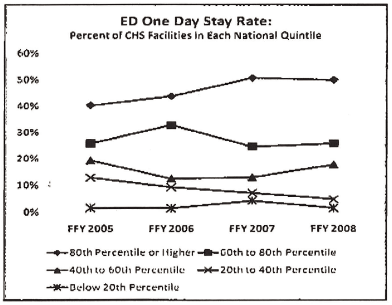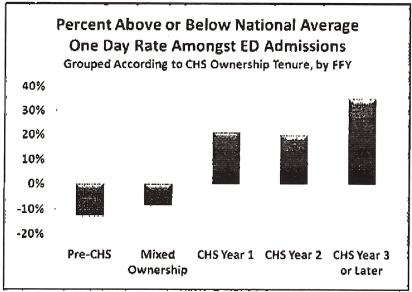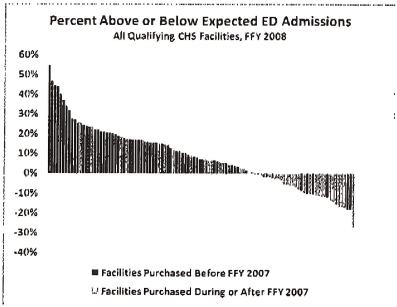Attached files
| file | filename |
|---|---|
| 8-K - FORM 8-K - COMMUNITY HEALTH SYSTEMS INC | g26886e8vk.htm |
| EX-99.3 - EX-99.3 - COMMUNITY HEALTH SYSTEMS INC | g26886exv99w3.htm |
| EX-99.2 - EX-99.2 - COMMUNITY HEALTH SYSTEMS INC | g26886exv99w2.htm |
Exhibit 99.1

September 28, 2010
Rachel A. Seifert
Corporate Secretary
c/o Community Health Systems Board
4000 Meridian Boulevard
Franklin, TN 37067
Corporate Secretary
c/o Community Health Systems Board
4000 Meridian Boulevard
Franklin, TN 37067
Dear Member of the Community Health Systems Board of Directors:
On behalf of the CtW Investment Group, I write to call upon the
Community Health Systems (CHS)
board of directors to immediately establish a Special Committee of independent directors to (1)
investigate the risks to future earnings and potential liabilities created by Community Health
Systems’ (“CHS”) billing of the Medicare program, which we view as aggressive and unsustainable;
and (2) provide a preliminary report to shareholders on the findings of the investigation no later
than October 31, 2010, including the Special Committee’s outline of the steps necessary to address
this issue and a timeline on when these steps will be completed. The Special Committee must be
convened on behalf of shareholders and operate in a manner that is fully independent of management.
In Federal Fiscal Year (FFY) 2008, analysis shows that CHS generated approximately an additional
$60 million, nearly 30% of net income for that year, from billing Medicare for “one-day stays” and
through higher than expected admissions from the emergency room.1 Short stays are viewed
as potential indicators of cases of inappropriate patient status assignment that result in higher
reimbursement than observation stays and they often originate from the emergency department. As you
know, admissions lasting only one day are closely monitored by the Office of the Inspector General
(OIG) and according to industry experts, are a potentially costly target and “low hanging fruit”
as Medicare’s Recovery Audit Contractor (RAC) program expands
nationwide.2
CHS shareholders reacted with concern when management noted in recent earnings calls that
admissions were dropping as a result of “one-day stays” being converted to “outpatient
observations” and then found no corresponding disclosure in CHS’ last filing on Form
10-Q. Shareholders are especially alarmed by this news given that CHS has emphasized emergency room
admissions as a key initiative and growth opportunity.
New measures designed to contain healthcare costs and scrutiny from regulators make this situation
unsustainable. In fact, a major publicly traded competitor, Tenet Healthcare, recently noted that
it had preemptively addressed the short stay issue and was avoiding claims being “overturned” and
“denied.”3 As part of its investigation, we therefore call upon the Special Committee to
explain the steps the board is taking to mitigate these risks and protect the interest of CHS
shareholders. Furthermore, based on the Special Committee’s independent investigation, CHS should
immediately correct any inadequate disclosure by providing shareholders with information on
admissions volume impacts, potential risks, and the federal scrutiny on this issue.
1900 L Street, NW, Suite, 900 Washington, DC 20036, 330 W 42nd Street,
Suite 900 New York, NY 10036 202-721-6060
www.ctwinvestmentgroup.com
2
The CtW Investment Group works with pension funds sponsored by unions affiliated with Change
to Win, a federation of unions representing 5.5 million members. These funds are substantial
long-term holders in CHS. We detail our concerns below.
Higher Reimbursement for Inpatient Admissions
Medicare reimbursement practices create an
incentive for hospitals to admit patients on an
inpatient basis rather than billing Medicare for them as outpatients on observation status. To
address this issue, the Program for Evaluating Payment Patterns Electronic Report (PEPPER), a
federal program administered through state quality improvement organizations (QIOs) that monitors
hospitals’ compliance with Medicare rules, provides hospitals with data on the proportion of
one-day stays. As noted in PEPPER documents and elsewhere, approximately 40% of all admission
denials on medical necessity grounds involved one-day stays. During the last three earnings calls,
Chief Financial Officer Larry Cash explained that the declining trend in volumes was driven in part
by the movement from one-day stays into outpatient observation visits.
In an OIG report detailing possible reimbursement incentives offered for inpatient admission, the
OIG claimed that “one way in which hospitals could increase the number of admissions is by billing
one day inpatient stays when the beneficiary actually received outpatient services, such as
observational care.”4 One-day admissions clearly represent a great deal of revenue for hospitals;
as a recent Modern Healthcare article noted, Medicare reimbursements for one-day stays are a
significant portion of the Medicare reimbursement paid out for hospital inpatient
discharges.5
These concerns prompted an analysis of the one-day stay rates at CHS hospitals in greater detail.
Additionally, because many one-day stays originate in the emergency department (ED), and because ED
services represent an integral part of CHS’ business strategy, we also analyzed CHS’ ED-driven
admissions as a whole. Publicly available data reveals three worrisome trends: (1)
Higher-than-average one-day rates are observed for patients admitted through the EDs of CHS
hospitals; (2) These high rates appear to be a direct result of CHS’ corporate strategy to increase
ED admissions; and (3) In general, ED admissions greatly exceed expectations at CHS facilities and
increasingly surpass these expectations as years accrue under CHS control.
We estimate that CHS was paid nearly $60 million for excess ED admissions in FFY 2008 alone. Given
the attention paid to one-day admissions and the associated reimbursements at stake, we were
alarmed to learn that these types of admissions had such a material impact on CHS’ overall volumes,
and we are further concerned about their continued impact on future volumes.
Half of all CHS Hospitals Aggressively Bill in an Area Targeted by OIG for Compliance
CMS and the OIG highlight PEPPER as a compliance tool for hospitals. PEPPER recommends further
review of admissions by hospitals at or above the 80th percentile nationally for one-day inpatient
stay rates.6 Analysis of publicly available Medicare data reveals that a large
proportion of CHS’ hospitals are at this level, as is illustrated in the graph below.7
3

| In FFY 2008, half of the facilities within their first full FFY of CHS ownership or later placed in
the 80th percentile nationally.8 We believe that CHS management therefore knows or
should have known about this risk. Of further concern, the chart shows that the proportion of CHS’
hospitals that reach this level has been increasing in recent years. CHS Corporate Strategy Rests on Increasing Inpatient Admissions |

The higher one-day stay rates appear to be
a consequence of CHS’ stated goal of
increasing ED admissions in general. As the slide
from the January 2010 JP Morgan conference to the
left shows, CHS believes a method necessary for
“Significant Opportunities for Growth in Revenue
and Operating Profit” is to “Increase Inpatient ER
Visits.”9 By describing these “ER
Visits” as inpatient, CHS articulates that its
strategy depends on driving admissions.
Furthermore, CHS management has asserted that
corporate growth has been tied to ED admissions:
“ER has been an initiative. When we came to the Company—most of management
came in late in 1997. The admit rate out of the ER was 10% or 11%. Today, it’s 15%, which
means we’ve done a good job of adding services and a better job of taking care of patients
and identifying those, and keeping them there inside the
hospital.”10
4
Moreover, this strategy is fundamental to management’s plan for integration of the Triad
facilities
“We get about 55 to 60% of our admissions through the ER. When we came to the
company, about 12 years ago, the admission rate out of the ER was 10 to 11%. Now it’s 15%.
Actually, the Triad hospitals had an admit rate, which was lower than the CHS, and we’ve
improved that admit rate so far.”11
We are concerned that in these attempts to create growth and to make new
acquisitions more
profitable, CHS has instituted a corporate policy that appears to have resulted in the admission of
many patients who may not have required inpatient care, and which has led to many ED visitors
being
admitted to inpatient stays that ultimately lasted only one day. Medicare data corroborates the
quotes by CHS management outlined above; for example, after acquisition, many CHS hospitals are
observed to have an increased number of one day stays that originate in the ED.
CHS Drives One-Day Stays through Emergency Room at Acquired Facilities
The increasing proportion of CHS hospitals reaching PEPPER’s 80th percentile outlier
status does not seem to be coincidental; indeed, the high ED one-day stay rates seen at CHS
hospitals are strongly correlated with CHS ownership. The chart below shows the extent to which CHS
facilities’ ED-based one-day rates exceed or fall short of the national average, with these
facilities grouped according to how long they have been owned by CHS.12

When aggregated, hospitals now owned by CHS but not yet acquired by CHS have one-day rates below
the national average. However, hospitals in only their first full FFY of CHS ownership exhibit an
average one-day rate that surpasses the national average. Hospitals in their third full FFY or
later of ownership exceed their corresponding national rates by an average of 35%. Since
management has stated that
5
many potential one-day admissions are now being classified instead as outpatient observation
services, the profitability and growth generated by this strategy does not appear sustainable.
Aggressive Emergency Room Admission Practices
Admissions-related risks are not wholly contained within the high one-day rates. In fact,
given that one-day rates are used primarily as a potential indicator of unnecessary admissions, the
OIG has encouraged the review of even longer hospitalizations.13 We worry that CHS’ high
short-stay ED admissions, coupled with increased ED admission rates at hospitals following their
acquisition by CHS, will draw greater attention from regulators.
To compare CHS’ admission rates to nationally-based expectations, we adjusted hospitals’ ED
admission rates for hospital- and patient-based information on national scales.14 In FFY
2008, 72 of CHS’ hospitals exceeded expected ED admission rates, given their particular patient
case mixes and locations.15 More alarming is the extent to which they do so. Ranking
hospitals according to the percent by which they exceed or fall below expected ED admission rates,
44 CHS hospitals are found to place at the 80th percentile or above nationally; 25 fall
within the top 10% of the country. The following chart provides a clearer picture of the extent to
which many CHS hospitals exceed their expected ED admissions. Each bar on the chart represents the
rate above or below expectations at a qualifying hospital operated by CHS at the end of FFY
2008.16

Pattern on Emergency Room Admissions Also Highly Correlated with Years of CHS Ownership
Higher-than-expected ED admission rates often seem to begin after CHS acquisition and then to
grow thereafter. Immediately prior to acquisition, the average hospital ED admission rate falls shy
of the expectations based on the patient- and demographic-adjusted national average; hospitals
within their
6
first full FFY of ownership, however, have an average rate well above that which would be
expected. CHS facilities in their third full FFY of ownership or later collectively exceed their
overall expected FD admissions by almost 9%. Of course, and as seen in the previous chart, many
individual CHS hospitals with different levels of tenure with the corporation exceed expected ED
admissions at rates much higher than that.
CHS Emergency Room Admissions Related to Nonspecific Chest Pain Particularly Problematic — A
Known Area of Compliance Enforcement
Deeper analysis reveals that these increases may not match national norms regarding ED admission
decisions. As one example, visitors to the ED who ultimately are treated for “nonspecific chest
pain” exhibit vastly different admission rates at CHS hospitals as compared to others. This
category of diagnoses — which has been cited by regulators as a large source of unnecessary
admissions — had an average ED admission rate of 28% amongst all national short-term acute care
hospitals in FFY 2008.17 In the same year, and for the same group of diagnoses,
hospitals that had been owned by CHS for at least one full FFY prior to the year’s start had an
average ED admission rate of 61%. Moreover, 10 CHS facilities each had ED admission rates above 80%
for nonspecific chest pain in FFY 2008.18
Enforcement Activity and Potential Damages
Hospitals have paid substantial sums to settle allegations of inappropriate inpatient
classifications. For example, in December 2007, Saint Joseph’s Hospital of Atlanta, a 410-bed
system, entered into a settlement worth $26 million to resolve “allegations that St. Joseph’s billed
Medicare for short inpatient admissions, usually of one day or less, when the services should have
been billed on an outpatient observation basis or as an emergency room visit.”19
Furthermore, as Medicare’s RAC program is expanding nationwide exorbitant rates of one-day stays
are a likely target for increased scrutiny.20
A simplified calculation using the difference in Medicare reimbursement between an inpatient stay
and an outpatient observation visit can amount to approximately $5,000 per
claim.21 Applying this amount to CHS’ nearly 12,000 excess admissions in 2008 would
result in almost $60 million, an amount significant enough on its own to warrant deeper examination
into CHS’ admission patterns by the Board. Were the amount applied to the more than 46,000 excess
admissions observed at CHS facilities since FFY 2002, the potential overpayment would reach $230
million. The observable patterns in CHS’ ED admissions are troubling and could trigger further
scrutiny by federal and state governments.
Because estimates show significant costs related to this issue and management has already discussed
the impact on admissions volume due to the shift to observation stays, we believe that disclosure
regarding the impact on volume, potential risks and expanding federal scrutiny should be made to
shareholders along with any steps CHS is taking to mitigate continued risk. Accordingly, we urge
you to immediately establish a Special Committee of the board to investigate this issue and make
corrections to disclosures as required. We further call on the Special Committee to provide
shareholders with an outline of the steps the board will take to address this issue, including a
timeline on when steps will be completed.
7
Conclusion
We believe it is incumbent on the board to investigate these concerns and provide a detailed
explanation of what the board is doing to mitigate the risks associated with its billing practices.
As part of its mandate, the Special Committee shall, at a minimum:
| § | Retain independent outside counsel and investigators, with no prior financial or other ties to the Company, its executives, or the board, to conduct this investigation; and | ||
| § | Instruct CHS to immediately correct inadequate disclosure on this issue by providing shareholders with information on admissions volume impacts, potential risks, and the potential for greater federal scrutiny. |
The potential impact of these matters on the long-term profitability of CHS requires immediate
board action. We look forward to your response to this letter no later than October 12, 2010.
Sincerely,

William Patterson
Executive Director
Executive Director
| cc.: | Office of the Inspector General, U.S. Department of Health and Human Services |
8
| 1 | The Federal Fiscal Year runs from October 1 through September 30; | |
| ED admissions are identified in accordance with ResDAC’s recommendation. Please see: How to Identify Emergency Room Services in the Medicare Claims Data. Technical Brief, ResDAC Publication Number TN-003, January 2003, Updated June 2008. Research Data Assistance Center, University of Minnesota, Minneapolis, MN. http://www.resdac.umn.edu; | ||
| All analysis described in this letter share some common methods and restrictions. Analysis is based upon Medicare claims submitted for reimbursement by short-term acute care hospitals from FFY 2002 through FFY 2008. Claims are excluded from analysis if at least one of the following conditions about a claim is true: 1) the patient is less than 65 years of age; 2) the claim has a null or otherwise invalid value coded for patient age, sex, or primary diagnosis; 3) the claim did not have any reported charges and/or payments received; or 4) the claim did not have frequency code of “1,” “2” or “7.” For ED one day stay rate reporting, only those hospitals that had at least 250 qualifying ED admissions in a given Federal Fiscal Year were included in analysis for reporting, ranking, and averaging purposes. For ED admission rate reporting, there was an additional requirement of a positive number of outpatient-only encounters in the ED. In addition, whenever CHS totals are reported for a given FFY, those totals do not include hospitals that CHS has sold either before or during that given FFY. | ||
| 2 | Evans, Melanie. “One Day Stays a Big Reason for Excess Pay to Hospitals, RAC Project Finds.” Modern Healthcare July 31, 2009. http://www.modernhealthcare.com/apps/pbcs.dll/article?AID=/20090731/REG/907309998 | |
| 3 | Tenet Healthcare (THC) Q2 2010 Earnings Call August 03, 2010 | |
| 4 | “Office of Inspector General. Department of Health and Human Services. “Review of the Health Care Financing Administration Philadelphia Regional Office’s Efforts to Identify and Recover Overpayments for 1-day Inpatient Hospital Stays in Pennsylvania.” April 2001. | |
| 5 | Evans, Melanie. supra n. 2 | |
| 6 | Short-Term Acute Care Program for Evaluating Payment Patterns Electronic Report User’s Guide, Fourth Edition | |
| 7 | Certain CHS hospitals are removed from this and all other analyses reported here that examine or combine rates across years, because we believe that they may have at least partially combined Medicare reporting efforts during this period. Combined Medicare reporting would make comparisons of these hospitals across different years more difficult to untangle. These hospitals are Vista Medical Center East and Vista Medical Center West in IL; Northwest Medical Center— Bentonville and Northwest Medical Center—Springdale in AR; both campuses of Affinity Medical Center in OH; and both campuses of SkyRidge Medical Center in TN. | |
| 8 | Analysis shows that newly-acquired hospitals take varying amounts of time to adopt the practices of the overall system. With this in mind, CHS average rates in this analysis include only those facilities that are within their first full FFY of CHS ownership or later; facilities are not included in analysis within their first Federal Fiscal Year under CHS control. However, given the large number of acquisitions in FFY 2007, their inclusion in this analysis would dominate the overall numbers for FFY 2008, and are therefore not included in this analysis. | |
| 9 | JP Morgan Conference, January 2010 | |
| 10 | CHS Oppenheimer and Co. Health Care Conference, Nov. 3, 2009 | |
| 11 | Robert Baird Health Care Investor Conference, 2009 | |
| 12 | “Mixed Ownership” refers to the actual Federal Fiscal Year in which a given hospital was acquired; in other words, the hospital is owned by CHS for only part of the year. Because acquisitions from FFY 2007 or later would reach only “CHS Year 1” on this chart—and would dominate it, since they represent roughly 50 hospitals—their rates are not included as a component of this chart. | |
| 13 | Office of the Inspector General, National DRG Validation Study: Short Hospitalizations. May 1989. | |
| 14 | Adjustments were made for patient age, sex, and primary diagnosis (grouped according to Clinical Classifications Software, or CCS, groups), as well as by adjusting for whether the respective hospital held a rural geographic location. ED outpatient claims were excluded from analysis if they had discharge status codes indicating that patients either died in the ED, left the ED against medical advice, or were transferred from the ED to another hospital for inpatient care. Hospitals were classified as rural if their most recent Medicare Cost Report listed them as “rural” (starting in 2008, since that is the most recent year of our claims data). If a designation of rural or otherwise could not be obtained from this method, then the hospital was classified as “rural” if its zip code was not part of a CBSA, as defined in OMB Bulletin No. 09-01. Patient case mix adjustments are necessary to take into account the different complexity of cases that different EDs will face. Adjustments for hospitals with “rural” |
9
| geographic status were performed due to CHS’s general comments that they favor acquiring rural hospitals. See CHS 2009 10-K, p.7. | ||
| 15 | To calculate “expected” numbers for comparison, we first calculate the national average rate by FFY for each combination of the patient- and hospital-based characteristics listed above: patient age, patient sex, patient primary diagnosis, and hospital rural-or-otherwise designation. Upon finding these national rates, we then multiply them by the corresponding number of ED encounters at each qualifying hospital within that given characteristic combination group; this gives us the “expected” number of ED admissions for that group. To determine the overall number of expected ED admissions at a hospital, the expected ED admissions total for all applicable groups are aggregated for the given FFY. So, for facilities meeting admission total restrictions for a given FFY, two totals were available: the total number of expected ED admissions for that facility, and that facility’s observed (or “actual”) number of ED admissions. We compare facilities based on the percent to which their actual number of ED admissions exceeds or falls below their expected ED admission totals. | |
| 16 | Results reported for Northwest Medical Center—Bentonville and Northwest Medical Center—Springdale in AR have been removed from this part of the analysis, as we believe they may have combined Medicare reporting efforts during FFY 2008. The results reported for Affinity Medical Center in OH are removed for the same reason. | |
| 17 | Short-Term Acute Care Program for Evaluating Payment Patterns Electronic Report User’s Guide, Fourth Edition | |
| 18 | FFY 2007 or later acquisitions by CHS are thus not included in this analysis. If they were, the average ED admission rate at CHS hospitals would be 48%—still well above the national average. | |
| 19 | Compliance Monitor. “St. Joseph’s Hospital of Atlanta to Pay $26M to Settle FCA Allegations,” January 9, 2008. (available at http://www.hcpro.com/CCP-203394-862/St-Josephs-Hospital-of-Atlanta-to-pay-26M-to-settle-FCA-allegations.html) | |
| 20 | Evans, Melanie, supra n. 3. http://www.modernhealthcare.com/apps/pbcs.dll/article?AID=/20090731/REG/907309998 |
|
| 21 | Report on Medicare Compliance, Vol. 15, Num. 37. “In Hospital Observation Struggle, Uncertain Outcomes May Justify Inpatient Admissions.” October 23, 2006. |
